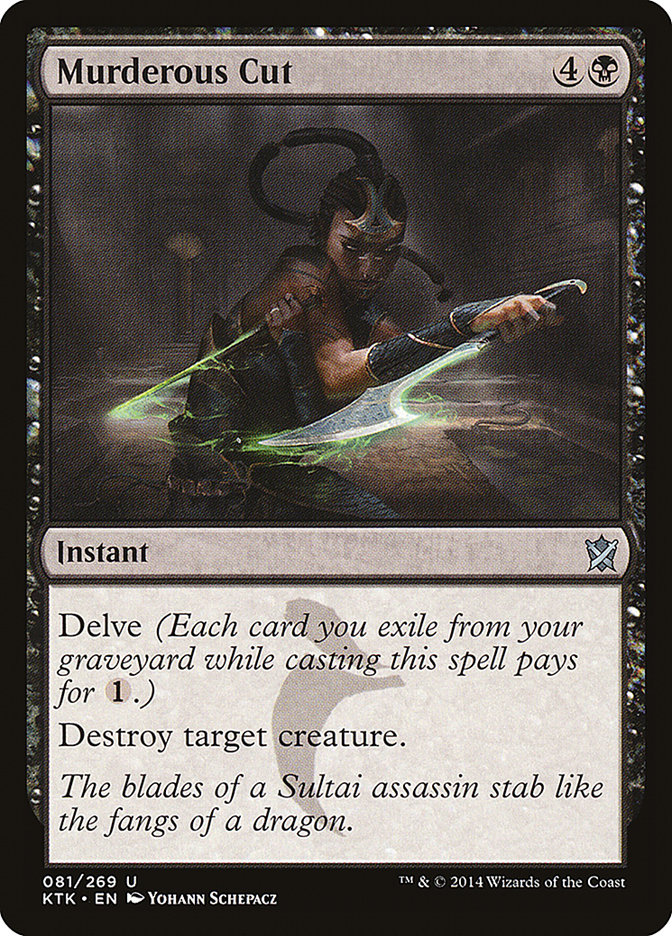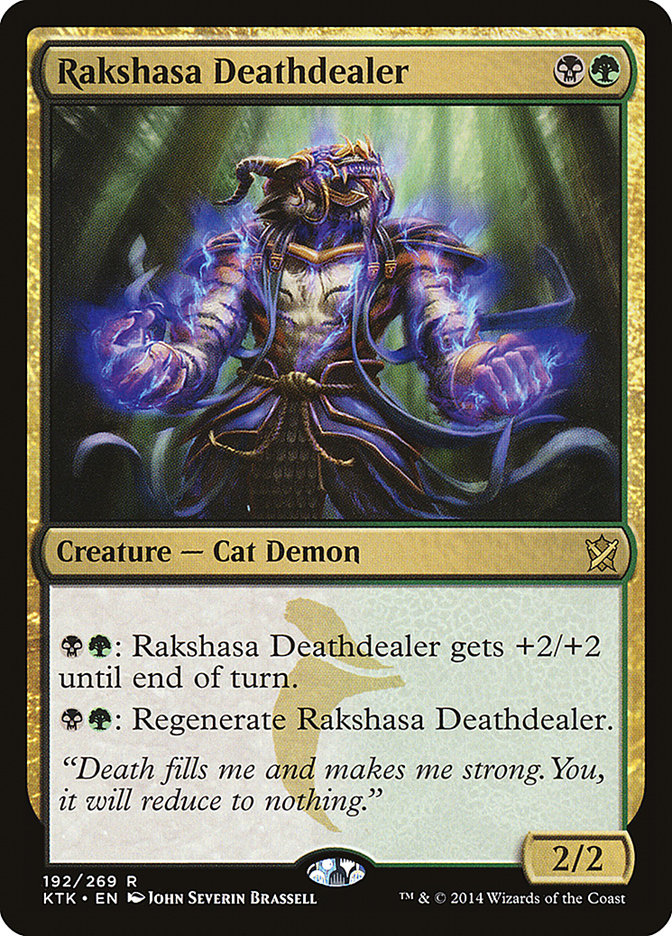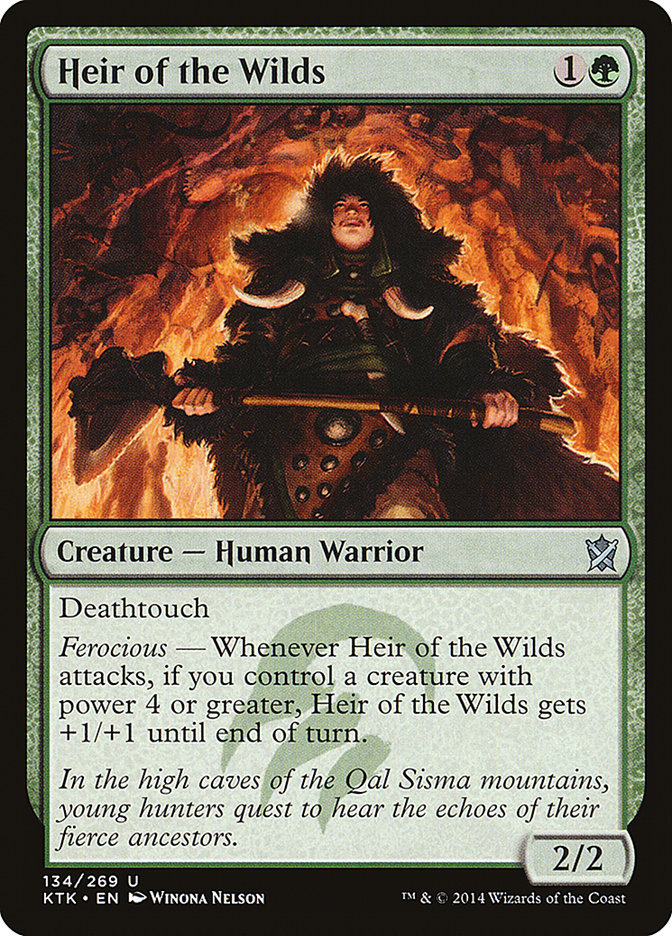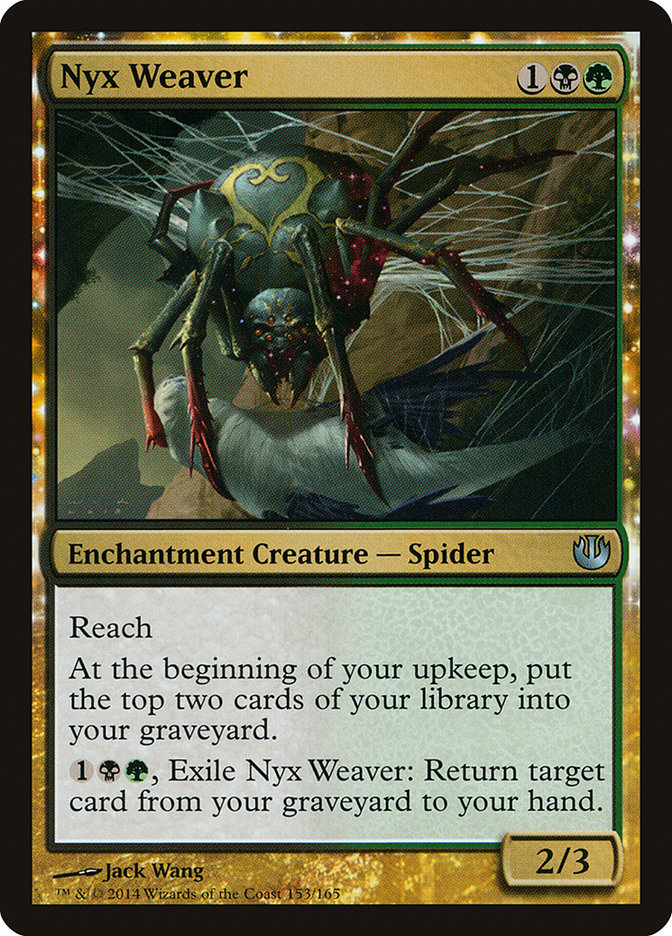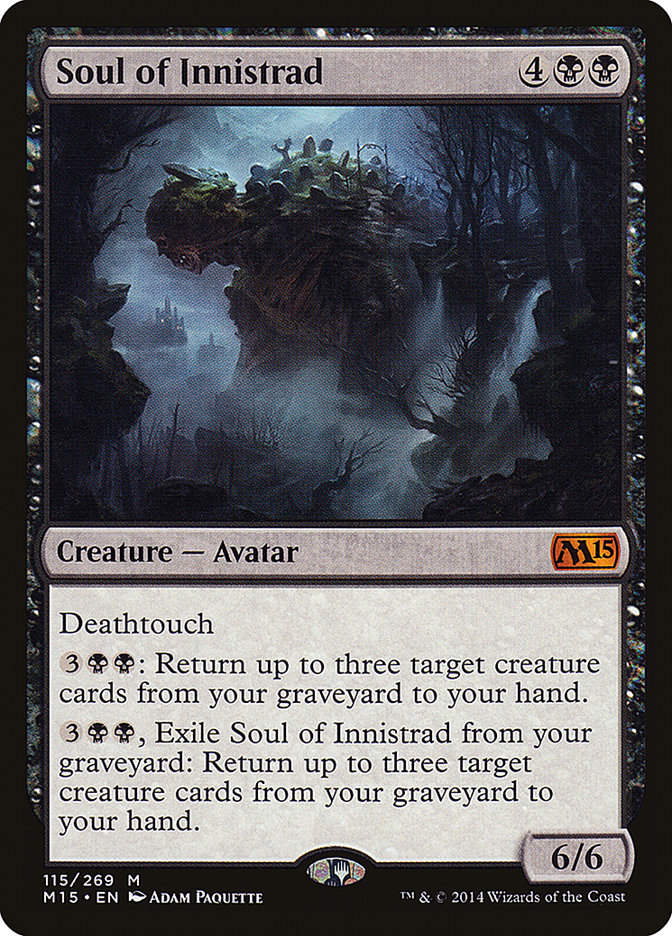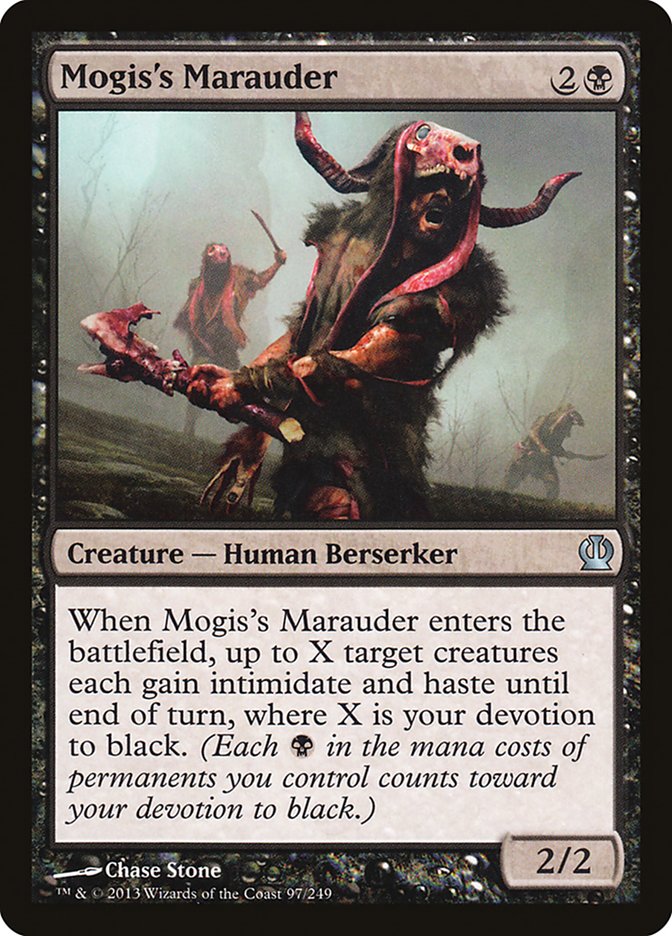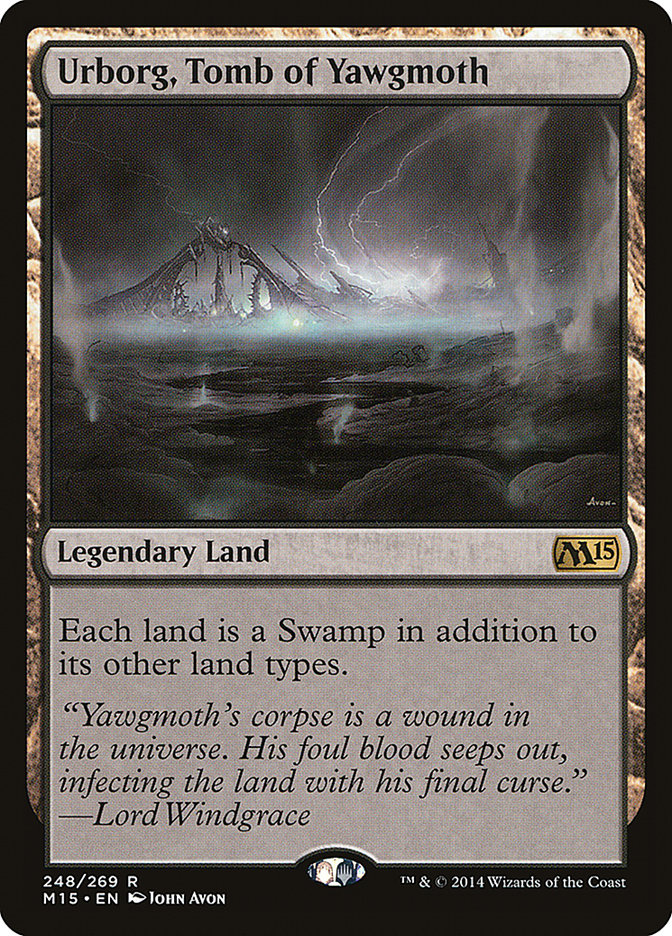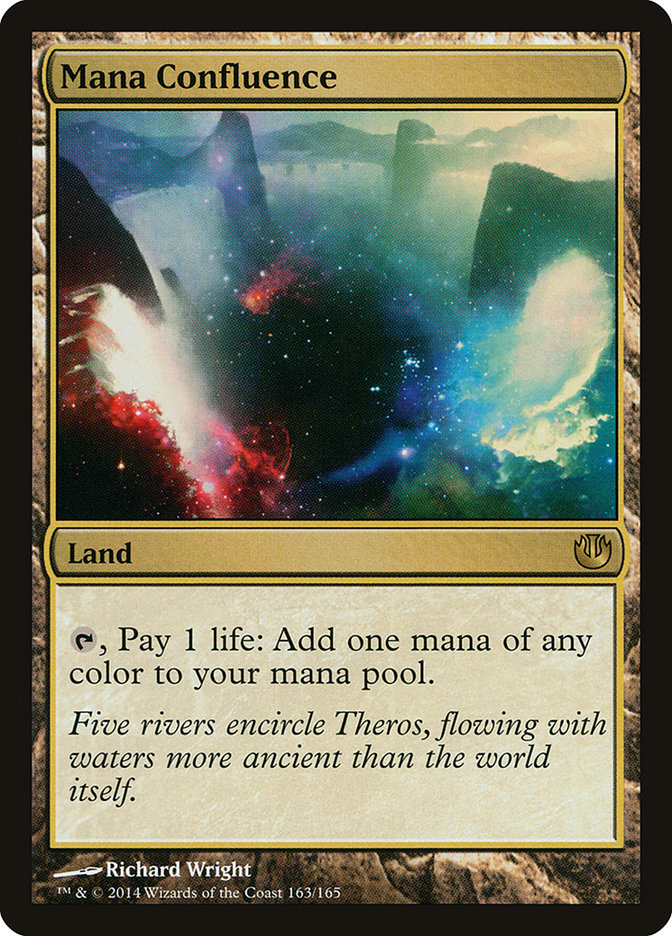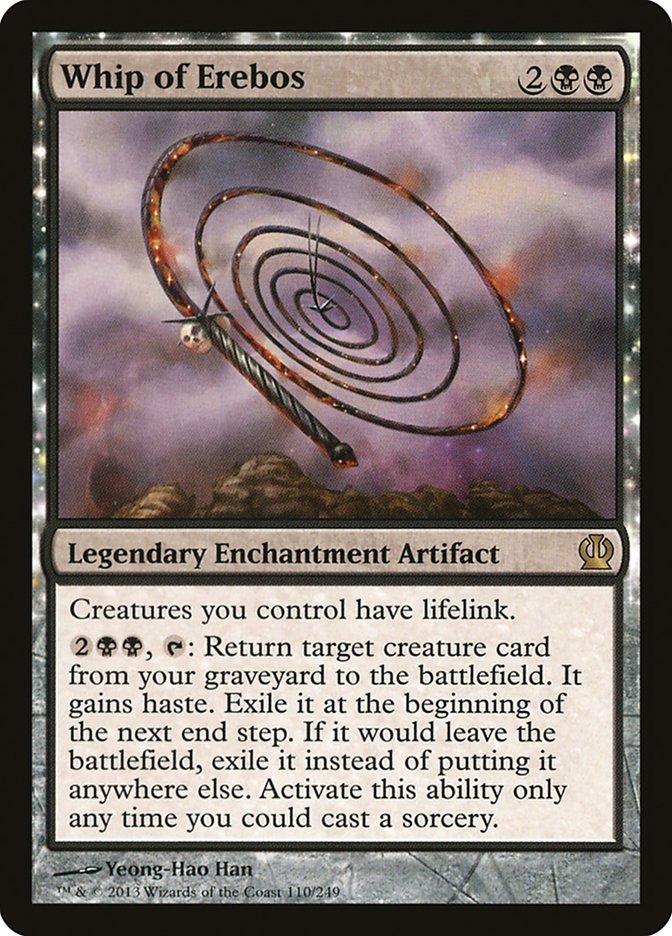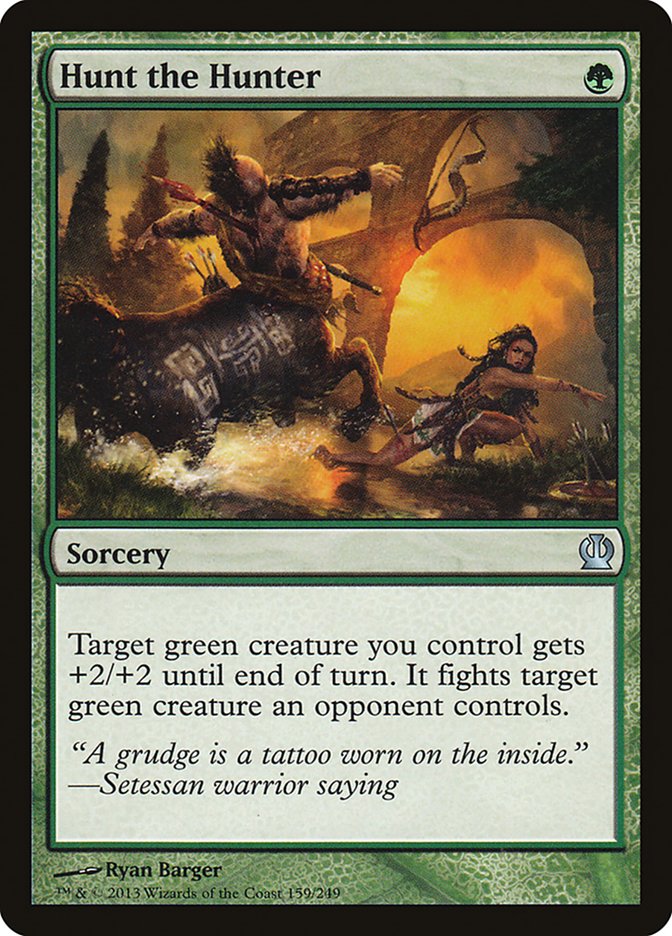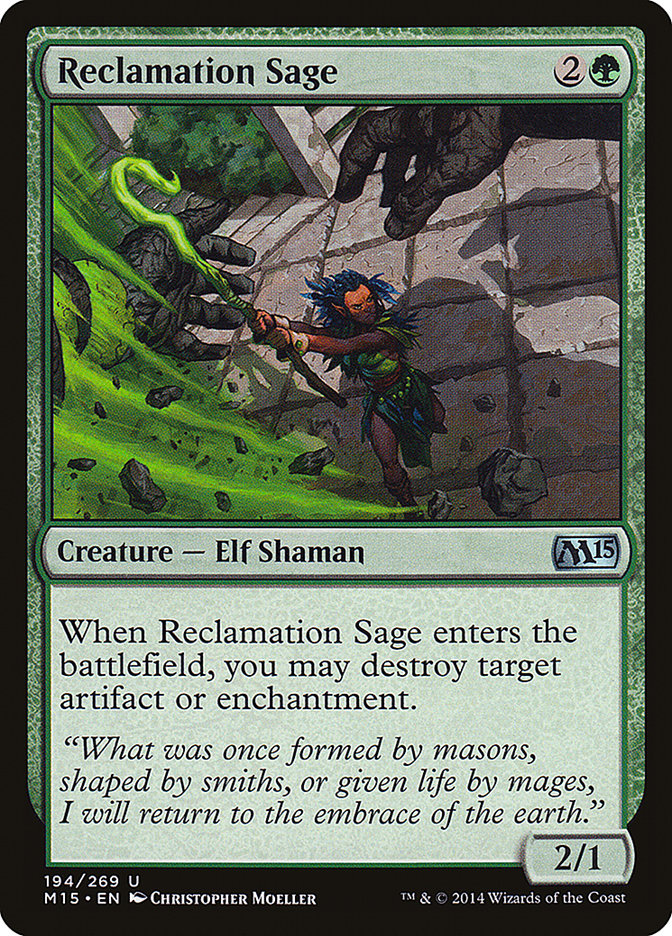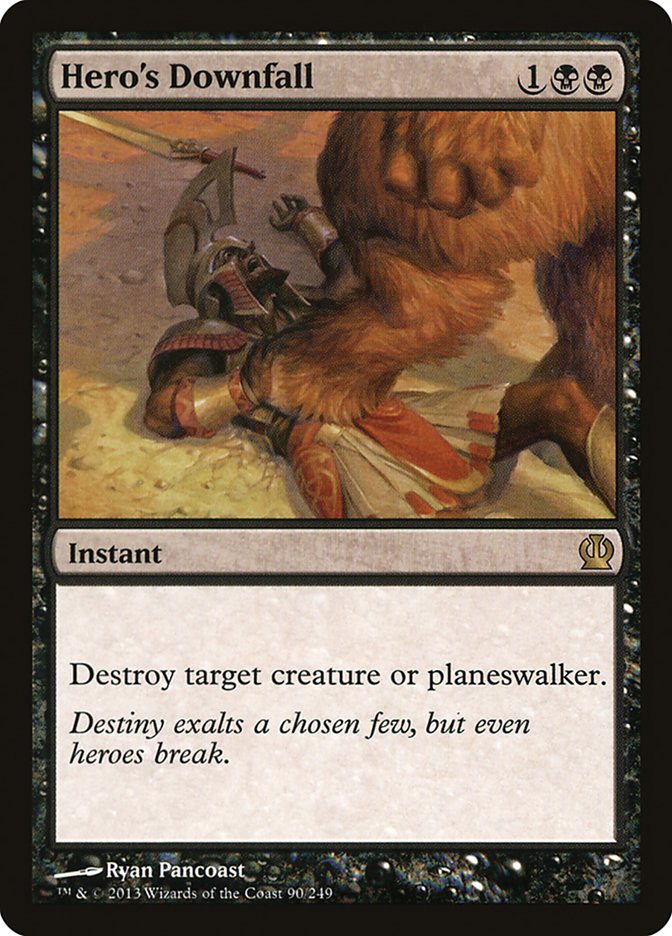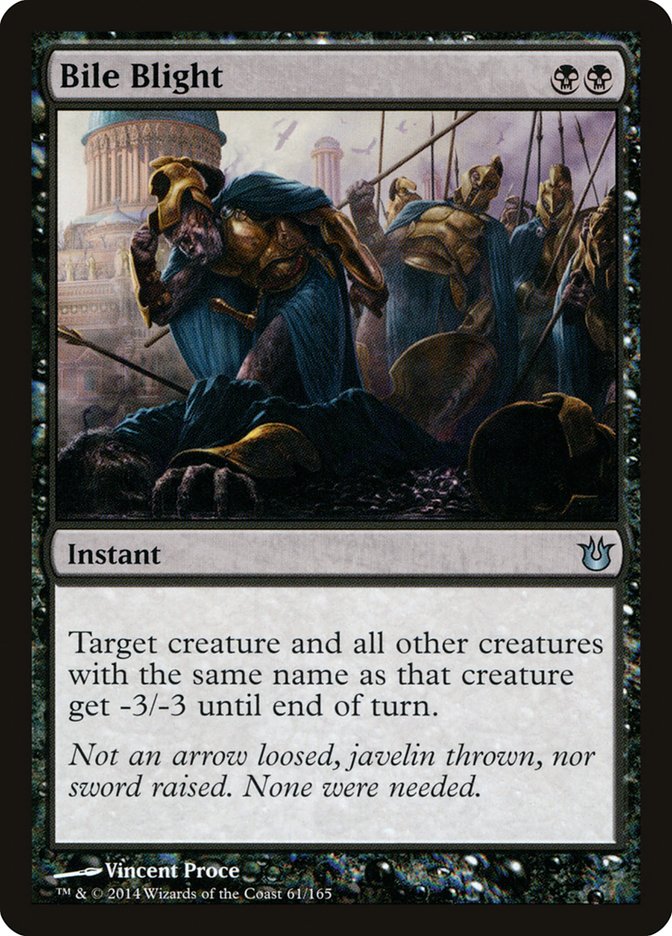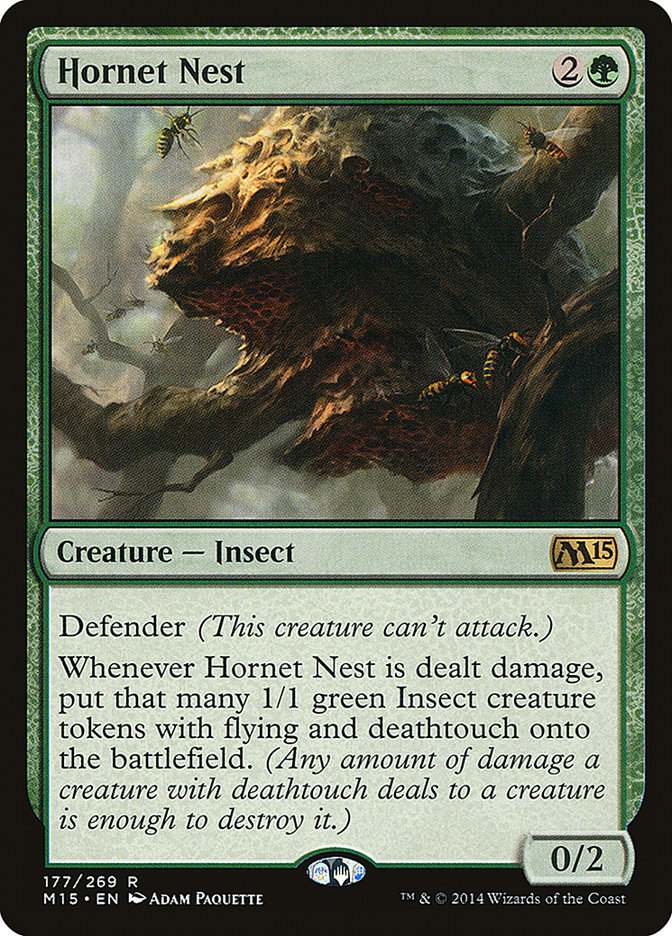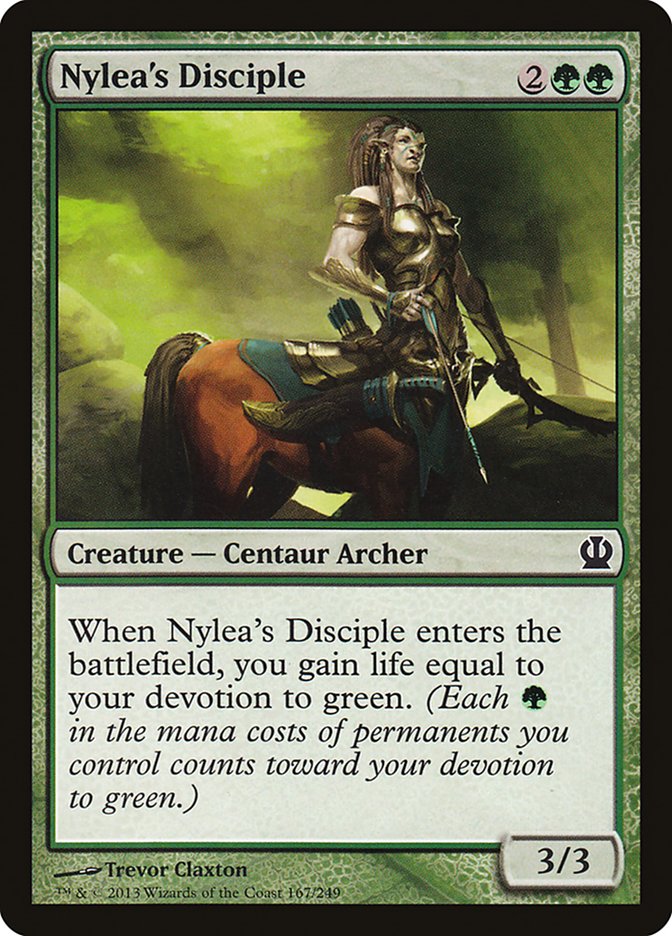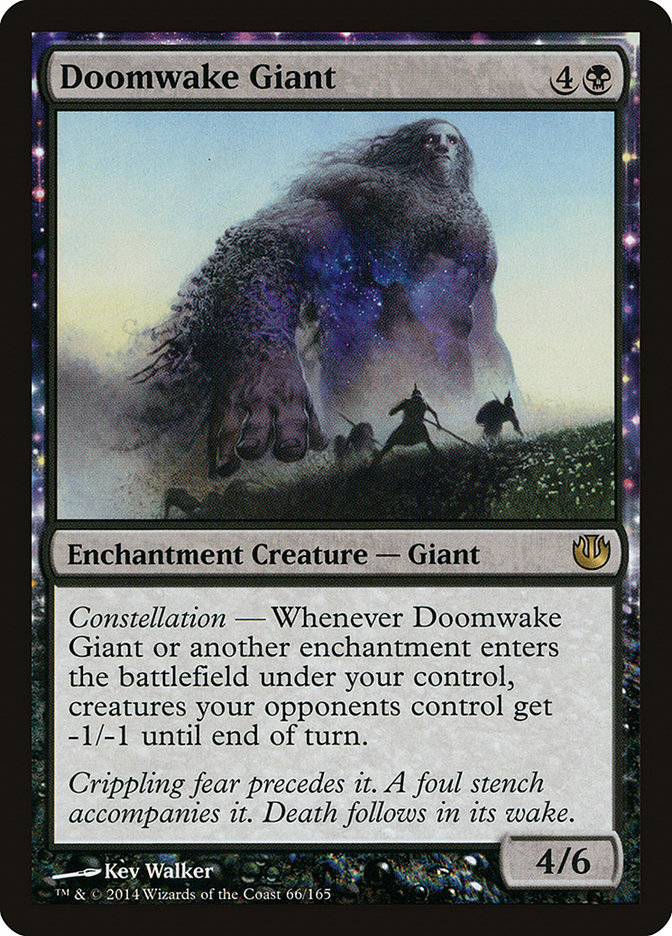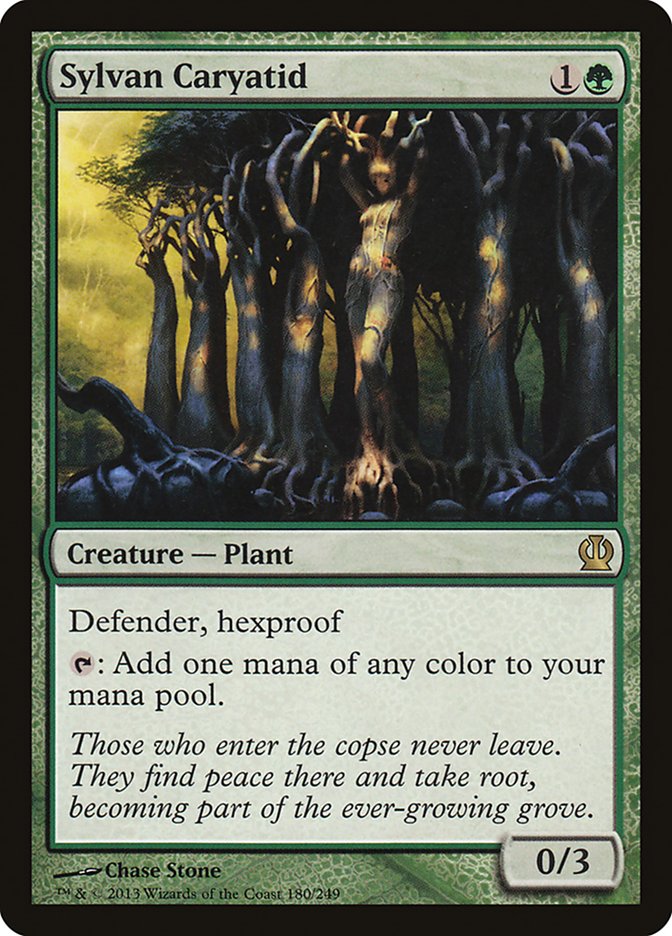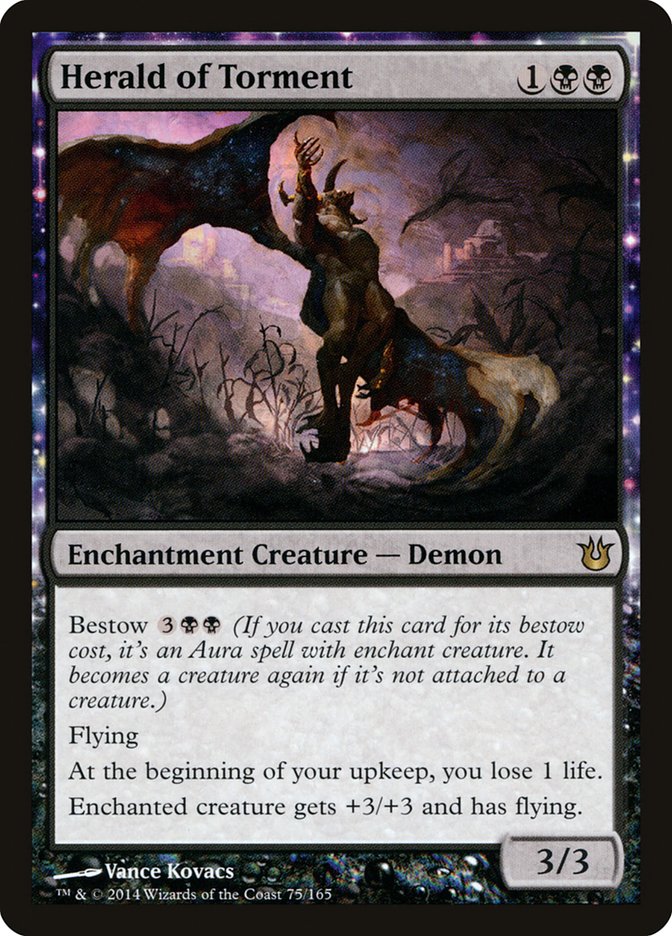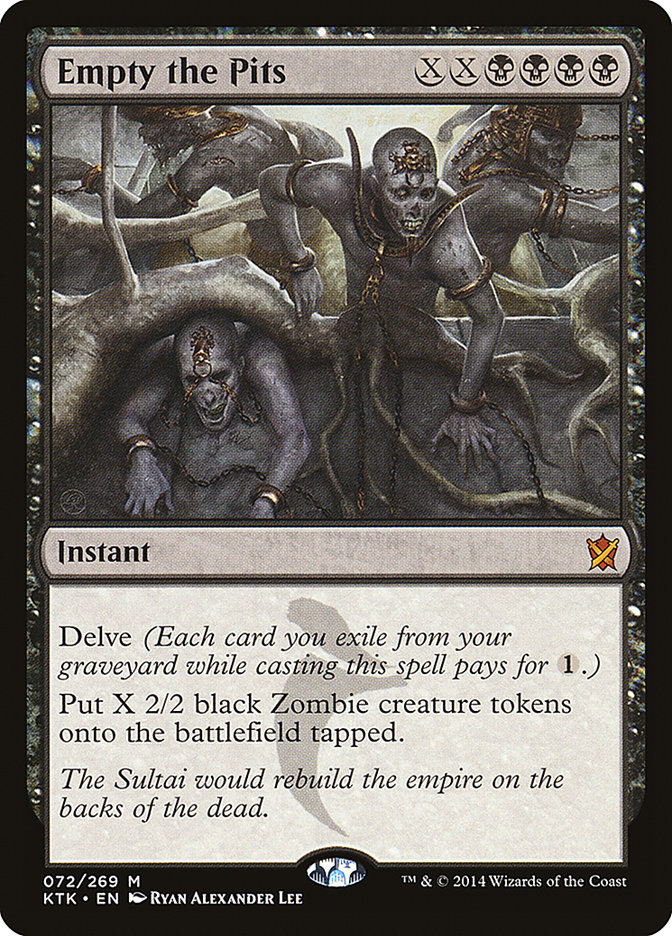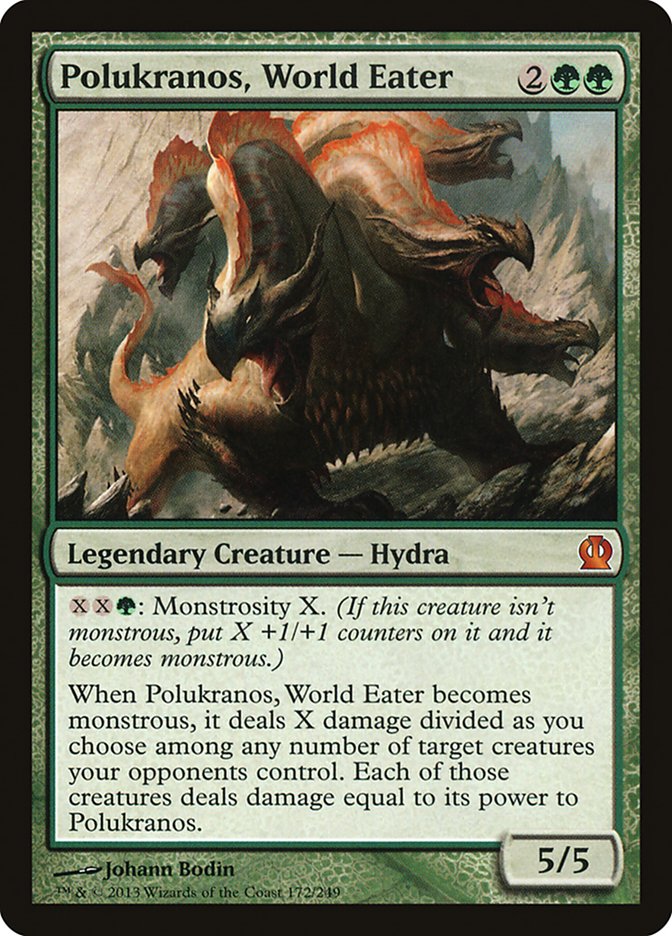Big weekend for Standard!
Khans of Tarkir is officially legal, and SCG really rang it in with a double Open Series weekend in two marquee markets: Indianapolis and New Jersey. I
spent Saturday recording a podcast for Masters of Modern, missing several GPTs. I knew there’d be one Sunday in Los Angeles, but truthfully I didn’t have
much interest; my Standard collection wasn’t especially robust, and I didn’t have any idea what to play.
So naturally, around midnight I checked up on the Standard Opens, and decided I wanted to battle. The format looked so fun! I’m going to spotlight a few,
but be sure to check out these Top 32 decklists:
So, the first thing I noticed was the incredible presence of green decks. Indianapolis was dominated by generally midrange green decks, with even the
devotion lists being much less combo-centric now that Burning-Tree Emissary is gone. Everyone seemed to want to go Caryatid into Polukranos or Siege Rhino,
with some kind of planeswalker top end.
The eventual winner, however, had easily the most interesting deck in the Top 8.
Creatures (25)
- 3 Hornet Queen
- 4 Elvish Mystic
- 4 Sylvan Caryatid
- 1 Ashen Rider
- 4 Satyr Wayfinder
- 3 Nyx Weaver
- 2 Necropolis Fiend
- 4 Siege Rhino
Lands (24)
Spells (11)

Samuel Valentine hybridized some milling elements to turn on delve and load his deck with even more haymakers. He can play a relatively normal midrange
game, but also gets to access Murderous Cut and interactions like Whip of Erebos alongside Hornet Queen and Ashen Rider, with Nyx Weaver around for
redundant value. I don’t think this is what I personally want to be doing, but it’s a really solid concept and has some great ideas.
Meanwhile, New Jersey featured a more diverse cast. There was still plenty of green in there, but the finals featured none of it. A relatively predictable
Mardu midrange strategy did come to pass, but the Jeskai Tempo deck piloted by Jadine Klomparens and winner Kevin Jones are really cool and present a truly
new angle for this metagame
Creatures (11)
Planeswalkers (3)
Lands (24)
Spells (22)

It’s a relatively simple formula, combining early, potent threats with a ton of reach via burn. Jeskai can play an aggro game and a flash game, which is
very attractive. Mantis Rider is also quite good right now, because flying is a very valuable ability in a world where green monsters are ruling the
metagame. Surviving long enough to cast Hornet Queen is no easy feat!
It’s unusual to see two novel decks winning Opens this early, but it’s very refreshing. Even so, my interest was only perked until I saw Brad’s deck.
Creatures (22)
- 4 Sylvan Caryatid
- 4 Courser of Kruphix
- 4 Satyr Wayfinder
- 1 Soul of Innistrad
- 3 Necropolis Fiend
- 4 Sidisi, Brood Tyrant
- 2 Rakshasa Deathdealer
Lands (24)
Spells (14)

I’m in the process of putting together a Sidisi Commander deck, so spotting her at the Open was a treat. Sidisi is an excellent card against some of the
format’s pillars, namely Goblin Rabblemaster and anybody trying to win the game via pure attrition like Thoughtseize and Hero’s Downfall. At the same time,
she needs a little help against larger, more efficient beaters like Siege Rhino, Polukranos, Brimaz, and Savage Knuckleblade. Fortunately, Sidisi works
excellently alongside one of the best cards from Khans of Tarkir:
This spell is bananas. I knew it was good, but having actually played with it now… it’s unreal.
Brad’s deck looked pretty cool, but one thing kind of bugged me. He was using a lot of the cards that fueled the older Nighthowler strategies–a deck I
liked very much–but rather than use these enablers to stream Nemesis of Mortals and Nighthowlers, he was essentially comboing for Zombies and the ability
to delve up Necropolis Fiend while supporting Murderous Cut. I was surprised to see Fiend, and as I thought about it the surprise never left. The removal
in this format is so good–Hero’s Downfall, Abzan Charm, and Utter End are all capable of dispensing with the Fiend, leaving you with an empty graveyard
and not much to show for it.
Compared to my old friend Nemesis of Mortals, I wasn’t really on-board. If they kill my two-mana 5/5… I just cast another two-mana 5/5, no big deal.
I didn’t have many of the cards for Brad’s deck, but at this point the gears were turning. When I prepared for Pro Tour Magic 2015 with Day1MTG, one of the
decks I took responsibility for was G/B Dredge, the deck popularized by Conley Woods and Ari Lax. I’d arrived at a list I wouldn’t have minded playing at
that Pro Tour, but both Jund Planeswalkers and B/W Midrange were testing better so I abandoned it. Still, I had all the cards… and most of them were still
legal!
Shadowborn Demon was certainly one of the biggest selling points for that deck, but Murderous Cut could pick up a lot of that slack and do kinds of work
that Demon never could. I was much more concerned about losing Grisly Salvage, as creatures and lands were the cards you needed to dig for the most, and
without Salvage it was possible the deck could no longer get away with its low land count.
I knew there had been some experimentation with Strength from the Fallen and that many of those decks ran less or zero copies of Grisly Salvage in order to
maximize Commune with the Gods. Considering four Commune had just become a necessity, I considered going for something like this list that Maheegan001 took
to 4-0 in a Daily Event several months ago.
Creatures (30)
- 1 Jarad, Golgari Lich Lord
- 3 Lotleth Troll
- 2 Sylvan Primordial
- 4 Elvish Mystic
- 4 Shadowborn Demon
- 3 Sylvan Caryatid
- 4 Nighthowler
- 2 Herald of Torment
- 4 Satyr Wayfinder
- 3 Nyx Weaver
Lands (21)
Spells (9)

I’d never tried it out, but it seemed somewhat promising. Mostly, the fact that this list was apparently casting Sylvan Primordial on less mana sources
than I was considering playing gave me some heart, but I decided to steer clear from Strength for now. Losing out on the trampling Lotleth Troll, lacking
space for Murderous Cuts, and being more vulnerable to graveyard hate were all significant factors in that decision, but I could see revisiting it in the
future.
So, I stuck to what I knew. I took my list for the Pro Tour and updated it for the new Standard format, arriving at this first draft which I took to a
Grand Prix Trial for Los Angeles on Sunday.
Creatures (30)
- 4 Elvish Mystic
- 4 Sylvan Caryatid
- 4 Nighthowler
- 1 Mogis's Marauder
- 4 Nemesis of Mortals
- 2 Herald of Torment
- 4 Satyr Wayfinder
- 4 Nyx Weaver
- 1 Soul of Innistrad
- 2 Rakshasa Deathdealer
Lands (21)
Spells (9)

Let’s run down some of the surprises.
I immediately liked this guy from the spoiler. He’s a two-drop that can attack unassisted right into Sylvan Caryatid and Courser of Kruphix, which is
something almost no other creature in the format can say. Still, I wasn’t sure about his home here–right up until the event, I was debating dropping to a
single copy. You’re not really a beatdown deck here, but in the end I decided my dearth of two-drops and the perks of being able to get in some early chip
damage while retaining a warm body was worthwhile.
Man, was I wrong. This card overperformed for me in a big way! I still don’t think you can afford to play four copies, but three is likely better than two.
The Deathdealers early damage let me establish pressure and tempo against attrition decks, it gave me an early blocker against aggro decks, and most
importantly it did both of these things while being very powerful in the late game as a mana sink. If you can force someone to Utter End or Abzan Charm
this guy, that just clears the way for you to bash them with Nemesis or Nighthowler!
One of the best reasons to play this creature is its power level against the format’s new Wrath, End Hostilities. This card is incredible against the deck
because it so easily handles bestow. Previously, Nighthowler was how you punished Supreme Verdict players, but now you’ve got to be a little tricker.
Thanks to his regeneration, the Deathdealer is a body that can survive the sweeper and then immediately pick up the Nighthowler to swing for loads of
damage.
I’ve looked at Heir of the Wilds as a similar two-drop to the Deathdealer. It either stunts the opponent or merits a removal spell, and it can also attack
into a Caryatid with impunity and Courser if you have an appropriately-sized creature.
It hasn’t made his way into the deck yet, but I could see it. It really helps you play dual roles, and puts the opponent into an awkward position.
Samuel Valentine’s spiders worked out, and I’d played the card in my list as well. The spider is excellent against graveyard hate like Tormod’s Crypt,
helping you to refill without requiring a significant mana investment, but where it really shines is in conjunction with Murderous Cut! These two cards
start looking less like Murder and Netcaster Spider and more like Swords to Plowshares and Snapcaster Mage in this deck, which is obviously serious
business!
Providing defense from Sarkhan and Stormbreath is a nice perk as well, and the Weaver enables me to run some unconventional bullets in both the main and
sideboard thanks to his Regrowth effect.
I did try Necromancer’s Assistant prior to the Pro Tour, but Goblin Rabblemaster essentially makes Weaver the slam dunk choice.
Everyone kind of assumed this card would make his way into this deck, but the Pro Tour came and went with not much from Nighthowler fans. While testing the
card myself, a few things became readily apparent: 1.) Binning this card against any attrition strategy was absurd, and often unbeatable, and 2.) Drawing
this card was essentially the worse thing that could ever happen to you.
It was such an obnoxious draw that I considered running Thoughtseize for a long time just to give me an out to get rid of it! Unfortunately, Utter End and
Abzan Charm mean that things have only gotten worse. It feels like Wizards either overestimated the potential of the Souls in Standard or had no interest
in pushing them to the forefront of the format, because printing both of these tools is bad news for the entire cycle.
That said, the singleton carries its weight and, like Weaver, is a key component in running a few singletons and granting you some inevitability.
Especially in the case of…
This was a huge find for me before the Pro Tour in this deck. Back then, it enabled you to blitz past Master of Waves and threaten lethal on the spot
following a Supreme Verdict. It’s a little worse now, because the million green and gold creatures make it less likely you can make an unblockable monster,
but it’s still a valuable weapon against End Hostilities and a very powerful trick that exploits opponents in an unpredictable way. I wouldn’t leave home
without one in this deck.
It might surprise you to see three copies of the legendary land, and truthfully I could believe that two is the correct number. You’re very interested in
getting double black early while also resolving Elvish Mystic on turn 1–this is no easy feat, with only Llanowar Wastes and Mana Confluence among the
legal lands capable of helping you do both. You really want 18-20 black sources to access two black on turn 3 or 4, and Urborg sorta-kinda counts as two
black sources for this purpose.
Two things are worth noticing. First, the extra copy has a smidge of utility to it now in that you can use it to add a card to your graveyard for Murderous
Cut, which is small but certainly better than it sitting pointlessly in your hand. Second, you want to be careful about when you land Urborg, because
fixing opposing mana or letting them avoid Mana Confluence pings can be a game-changer.
In the end, I’d much rather draw an extra Urborg than none at all, so I want to run as many as possible without getting really tripped up.
Trying to build a manabase that could cast turn 1 Elvish Mystic and turn 3 Nighthowler/Hero’s Downfall/Bile Blight isn’t easy. I really want fourteen
untapped green sources to support those Mystics, and Confluence gets me to that number while also providing me with something in the range of sixteen to
nineteen black sources, depending on how you count Urborg. It’s possible I could afford a Forest here thanks to Wayfinder adding to my outs, but I’m not
sold on the math there and am essentially building my manabase with Wayfinder as a freeroll fixer.
In all fairness, I lost one game to having Confluence when a Forest would’ve likely been enough to save me… but I also failed to play a fourth land in
that game on the draw with two Wayfinders that both got lost (freeroll, indeed). The latter was likely a more decisive contributor to that loss, and I
still nearly won the game… so I’m on Confluence’s side, for now.
The Sideboard
My sideboard was basically garbage in a can. Okay, it wasn’t that bad, but it’s hardly any kind of gospel. I’m quite sold on the maindeck, considering only
a couple of possible changes, but the sideboard is another story.
With it being the first week of the format and a local event, I couldn’t possibly know how to actually build one, so I tried to include mostly pairs of
cards that I knew might apply to the range of expected opponents, giving me some flexibility.
One of the hardest parts of building this deck’s sideboard is keeping in mind that you can’t really side out very many creatures. There are 30 creatures in
the main, and if you start going below 28 then you have to begin siding out some Nemesis of Mortals to compensate. This isn’t the end of the world, but one
must build with that in mind.
A few of the cards shined, and a few… what’s the opposite of shined?
This card was pretty mediocre for me in general. I stand by playing one in the 75, but the red decks are now mostly three-color builds with real removal
spells. Connecting with a big creature is harder than it used to be, and there aren’t as many decks that fold up to the constant unearthing.
I’m being a little results-oriented, but during most of my games I wasn’t hoping to draw a Whip, and I was actively avoiding it when I resolved Commune, so
that’s telling. You could do worse than a second Whip, but I also think you can do better.
This card was great for me. It’s a hyper-efficient removal spell against green devotion strategies, letting you get a board developed while slowing them
down. It’s also completely absurd in conjunction with an early Rakshasa Deathdealer, allowing you to kill a turn 3 Siege Rhino and slam home six damage…
even on the draw!
I don’t think more than two are worth playing, and a singleton is possibly better, but I highly doubt it’s possible the metagame shifts to the point where
I cut them completely. I really liked having this card.
I felt obligated to play this card, considering my access to Weaver, Soul, and Whip. It was quite bad for me, but you’re still probably required to play
the one just because the deck can get so many uses out of it. If the metagame shifts the way I expect it to, towards more Banishing Lights and
constellation decks, then it could improve by a lot. This is a singleton in the sideboard for now, but things may change and your local metagame could very
easily require more copies.
Did their job, can’t ask for much more. You can’t afford to run a ton of these because of the need to keep a high creature count, but if you adjust the
deck to “transform” into a normalized midrange deck then that could become possible. As you can rarely board in more than four removal spells, and most
frequently only two, I’m confident it’s correct to split the difference here.
Keep in mind that both Herald and Marauder are great against all the planeswalkers, so you don’t have to lean as heavily on Downfalls to handle those
cards.
I’ll admit it: I tried to get cute. My intentions were pure–creature sideboard slots really help me on the Nemesis of Mortals count–but I wouldn’t advise
repeating this particular experiment.
The Jeskai Tempo deck seemed like it might really struggle with Hornet Nest, especially when played into Goblin Rabblemaster, and I was interested in
punishing that aspect of the deck. In the end, I played against a lot of Mardu Rabblemaster and that deck is much more capable of killing the Nest and
gaining tempo in the process.
If you’re a big Hornet Nest fan then I could see finding the space for a singleton, but two was a mistake for sure.
Better than the Whip against the aggressive decks I played against, but not by a lot. I’d probably rather do something like two Coursers and two Disciples
in these slots.
The only card I want to run more copies of! Doomwake is a sweet way to clean up Rabblesmasters that may have gotten a little too rowdy, and it’s a solid
way to clear out Elspeth tokens and any swarm strategies. I was siding it in a fair bit, and pretty happy to draw it. Two or three is likely where this
slot should wind up.
If you rebuild the deck for Strength from the Fallen, you should likely consider maining at least two copies of Doomwake Giant. A higher density of cheap
enchantments makes it much more powerful, and that deck is more interested in clearing out the trash and getting in a big hit than grinding the game with
superior forces.
Moving forward, I have some ideas.
Sylvan Caryatid was the card I was least happy to draw by several miles. Any turn other than turn 2, it was absolutely rancid. I’ve considered going for
Voyaging Satyr instead–it’s much better against Rabblemaster and can actually carry a Nighthowler in a pinch, which is one of Caryatid’s largest flaws.
The problem is obviously it’s much more vulnerable to early removal spells like Magma Spray, Lighting Strike, and Magma Jet.
The other issue is that Satyr’s great at getting you your second black… but can’t ever get you the first. A turn 2 Satyr and turn 3 Temple still enables
Nyx Weaver, but not only is that a fair bit of work… it’s also a pretty bad Temple thanks to the Weaver’s trigger, a pretty annoying nonbo.
For now I think I’m stuck with Caryatid, but my ear’s staying close to the ground in the hopes that this changes. I doubt it will, mostly due to the mana
troubles, but if you’re considering a Sidisi variant with Opulent Palace then Voyaging Satyr is worth considering as an Elvish Mystic replacement.
All of that said, I think I’m going to cut the fourth Caryatid. Like I said, drawing it felt bad a lot, and I’d like to make room for that third Rakshasa
Deathdealer. The only other reasonable trims are the fourth Nyx Weaver or the second Herald of Torment.
Herald of Torment is kind of tough to evaluate right now. The flying can be very powerful, and it’s one of my favorite ways to straight-up execute an
Elspeth, but if players keep jamming Cuts, Utter Ends, and Charms then you’re going to lose a lot of tempo when you try to bestow. Don’t even get me
started on Hornet Queen!
The life loss is significant as well, as a lot of games saw me holding Herald and just waiting for a good spot–a spot that never came in several games.
I’ll always play that one for the mise, but it’s possible the second is unnecessary and should also hit the bench. Playing the fourth Deathdealer is a
decent option, but I wouldn’t mind moving a single Hero’s Downfall main, either. Silence the Believers could be reasonable as well, but I’m more wary of
Jeskai’s early drops at this point in time.
A couple Coursers may also be worth it.
I definitely want to sideboard Empty the Pits, but a combination of availability and a confidence that End Hostilities wouldn’t be very common steered me
clear this weekend. I’d certainly sideboard a singleton in the future, and two wouldn’t be crazy.
If you want a plan that removes some of that graveyard reliance, Polukranos and Boon Satyr are among the better creatures to start with. Polukranos can do
a decent Nemesis impression, and it’s obviously pretty potent against smaller creatures. Trouble is, I don’t see a lot of them right now!
As for my sideboard, we’ll have to see how things shake out. The environment is brand new, so I’ll have a better idea of how to sideboard when I see the
targets more clearly.
I had a blast playing this deck, and it felt very powerful. The only games I lost were two land Wayfinder keeps that never got there or three-spell
mulligans that drew nothing but lands and Caryatids. Amusingly, those two-land Wayfinder games were quite competitive, which is why I think trimming a
Caryatid is the best shift I can make in spite of losing to mana issues.
It’s very possible that adding Sidisi to this deck is worth it, and I’ll be looking at that possibility as I continue to test the strategy. She’s a sweet
card, and if I figure out how to make a manabase that can support her I’m pretty interested. I think it starts with cutting Elvish Mystic and playing more
taplands like Palace, but I still need to have access to fourteen green, eighteen black, and somewhere in the range of twelve blue sources. The mana base
I’m envisioning would look a lot like Brad’s, I think, but I’d find room for at least one Urborg.
Until I become convinced, I’ll stand by Elvish Mystic. Turn 2 three-drops are just too good to pass up in a Standard format with so many people filling
their deck with taplands and doing nothing relevant until they have four mana. I’ve been playing a lot of turn 3 Nemesis of Mortals, and Elvish Mystic is a
big part of that by giving me the potential to have cast two enablers prior to the Nemesis itself.
There’s a good chance I’ll be hitting another GPT this weekend (rather than crushing dreams unnecessarily at a PTQ), so if I update the deck from there
I’ll be sure to let you guys know on Twitter!


